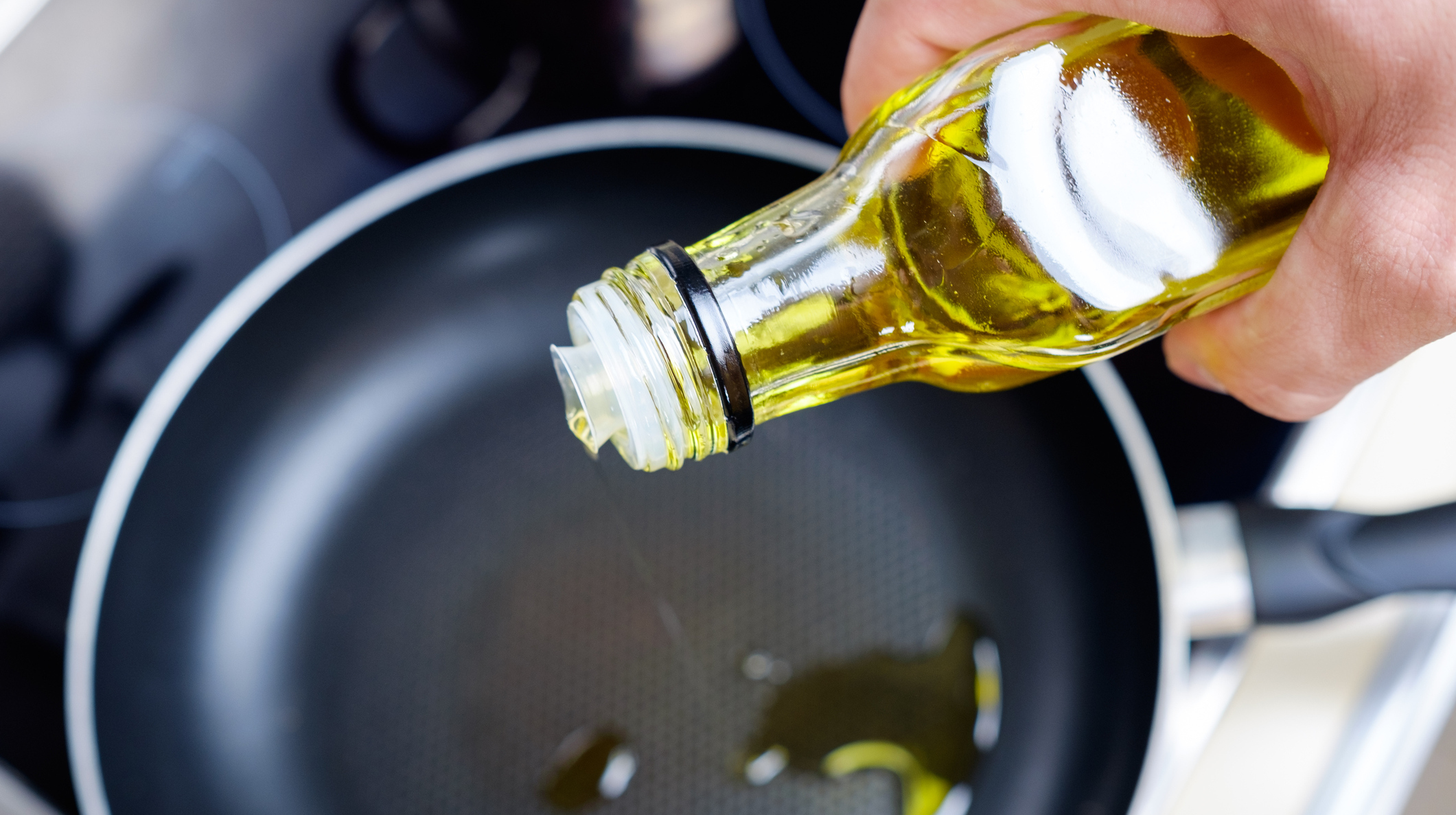What Is Non-Extra Virgin Olive Oil, And When Should I Use It?
Most of us assume that extra virgin olive oil, or sometimes EVOO in recipe shorthand, is the good stuff. After all, cookbooks call for it specifically, and it even has "extra" right there in its name. But what about its non-extra-virgin siblings that might just be labeled "olive oil" or "light-tasting olive oil"? Are they inferior oils for bargain-hunting plebeians too cheap to pony up for the good stuff?
Not exactly. In fact, if you're using olive oil in a delicately flavored dish, you may even prefer the standard stuff.
Here's why.
Defining extra-virgin olive oil
Extra-virgin olive oil is essentially the oil that's pressed out of olives once the water and pulp parts are removed. It can't be heated up or have any chemicals added to it. (Those standards are mostly set by non-government groups such as the International Olive Council. Some states, such as California, New York, Oregon, Washington, and Connecticut, also have their own extra virgin olive oil regulations).
Regular olive oil, on the other hand, has been heated and/or refined. Say a producer presses a bunch of olives intending to make EVOO, but the resulting oil has some off-flavors. The producer can then filter or refine that oil until it's a nearly odorless, colorless oil. Typically, the producer will then blend some delicious extra-virgin olive oil in to add back a bit of aroma and flavor.
Joseph R. Profaci, executive director of the North American Olive Oil Association, tells The Takeout olive oil generally breaks down as such:
- Extra-virgin olive oil: 100 percent EVOO
- Olive oil: approximately 15 percent EVOO or virgin olive oil blended in
- "Light-tasting" olive oil: approximately 5-10 percent EVOO blended in
When to use olive oil vs. extra-virgin olive oil
Because olive oil and "light-tasting" olive oil dilute EVOO in a less flavorful base oil, they're less pungent and sharp-tasting than EVOO itself.
"If you want a lighter-tasting oil but still want [some of] the health benefits [of olive oil], then use the bottles marked olive oil or light-tasting olive oil," Profaci advises.
Laurie Moldawer, the director and owner of Park City Culinary Institute in Salt Lake City, Utah, says it makes sense to choose regular olive oil when cooking subtly flavored dishes like shellfish.
"If you were cooking seafood with a delicate flavor, you could easily overpower it if you use extra-virgin olive oil," Moldawer tells The Takeout. "It's so peppery, so you have to be careful with things that have a delicate flavor."
She says that regular olive oil would also be a smart choice for preserving foods like herbs or vegetables in olive oil, because it will allow the flavors and colors of those ingredients to shine through most clearly.
"People think extra-virgin olive oil is the best, but it should come down to what you're doing, not the price point or color. With all oils, not just olive oil, the oils that have the most flavor are not always the ones you want to use," she says.
Of course, extra-virgin olive oil is still the gold standard in dishes where you want that rich, peppery flavor: as a dip for bread, in a salad dressing, or drizzled as a pasta topping. But for those times when you're just using olive oil as a marinade or to sauté ingredients you plan to boldly season, you might want to use a more neutral version like regular olive oil or light-tasting olive oil.
Taste before you cook
Use those two categories as a general guideline, experts tell me, but above all, taste the olive oil you've bought. Is it spicy? Mellow? Vegetal? Neutral? That will help you determine its best culinary application—and whether to buy it again.
"Growing up in this country, holding up a bottle of canola oil and tasting it sounds disgusting. It's a mindset that's hard to change," Profaci says. "But with olive oils, you should be tasting it and learning what you like and don't like."
